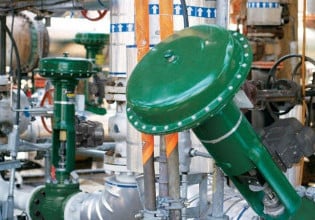The world is one step closer to more affordable and eco-friendly electric vehicles (EV) thanks to the efforts of ANSYS, Inc., General Motors LLC, the Energy Department's (DOE) National Renewable Energy Laboratory (NREL) and ESim LLC, which are working to design better, safer and longer-lasting lithium-ion EV batteries. The team's efforts have led to the standard inclusion of battery models in the latest release of ANSYS® Fluent® software, which is a significant milestone in advancing EV design efficiency.
Over the last two and half years, the team worked on a DOE-funded project, Computer-Aided Engineering for Electric Drive Vehicle Batteries (CAEBAT), to combine new and existing battery models into engineering simulation software to shorten design cycles and optimize batteries for increased performance, safety and lifespan. The team is modeling thermal management, electrochemistry, ion transport and fluid flow. As a result of the work, a battery model is now standard in ANSYS Fluent, a leading computational fluid dynamics solution. This seamless Fluent capability helps battery developers break the time-consuming cycle of design-build-test-break for prototyping and manufacturing.
"The emphasis in the software integration has been to provide a flexible array of modeling choices that can support several categories of battery researchers, cell manufacturers, pack integrators and vehicle manufacturers that deliver fast and accurate results," said Jan Aase, director of vehicle systems research lab at General Motors. "With a concise plan for rapid deployment to the industry, the software solutions created through this project are already helping designers and engineers at GM to accelerate the pace of battery innovation and development for future electric-drive vehicles."
By drawing on a unique approach pioneered at NREL, a DOE national laboratory, collaborators integrated disparate physical battery scales (electrodes, cell, pack and full vehicle) and multiple physical phenomena (electrochemical, thermal, fluid and structural) – factors that have been a key barrier for effective simulation. In addition, the team blended established detailed 3-D field simulation technologies with systems-level simulation. They also extended the reach of the technology by ensuring that these new tools can interact with current and future battery models.
"ANSYS is well known for providing reliable simulation technology to enable sustainable design across a wide range of industries, including automotive," said Sandeep Sovani, director of global automotive industry at ANSYS. "The CAEBAT project has been a great opportunity for ANSYS. We are partnering with other recognized leaders in EV battery technology to develop and deliver powerful modeling tools that can be used by all battery manufacturers to accelerate production of safe, reliable, high-performance and long-lasting EV batteries that make vehicles more fuel-efficient and sustainable."
Throughout the remainder of 2014, the team will refine automation techniques for battery cell and pack-level simulations and continue to validate the models with experiments. Collaborators plan to implement cycle-life and abuse (such as overheating) models. NREL's multi-particle model, with ability to model mixture of active materials with different particle sized, will be incorporated as well. At the pack level, state-of-the-art simulation is further advanced by developing innovative reduced-order models, derived and calibrated from the cell-level models and carefully validated through experiments — all designed to enable a balance between model fidelity and computational cost. These efforts contribute to the development of a complete battery cell and pack-level design tools that will be available in the future product releases.
GM awarded ANSYS a subcontract to create battery software tools that will help accelerate development of next-generation EV batteries. This U.S. DOE-funded project is a result of a competitive procurement through NREL that was presented to GM in 2011. This activity is part of the DOE EV Everywhere Grand Challenge managed by the DOE Office of Energy Efficiency and Renewable Energy.






